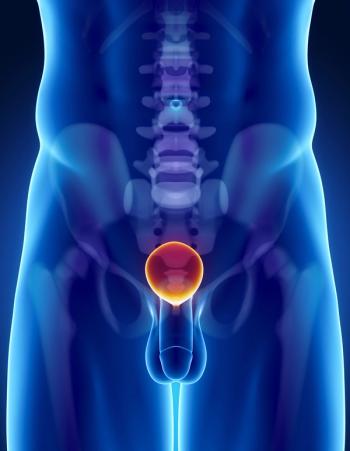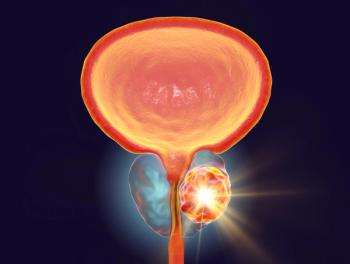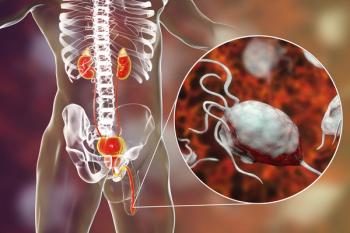
Oncology NEWS International
- Oncology NEWS International Vol 6 No 8
- Volume 6
- Issue 8
Americans Not Convinced of Value of Watchful Waiting
CHICAGO--Despite strong evidence of the effectiveness of watchful waiting for men with localized prostate cancer in a Swedish study, participants at the Prostate Cancer Shootout II conference remained unconvinced.
CHICAGO--Despite strong evidence of the effectiveness of watchful waitingfor men with localized prostate cancer in a Swedish study, participantsat the Prostate Cancer Shootout II conference remained unconvinced.
Expert panelists and members of the audience worried in particular aboutthe age at which watchful waiting might be offered and the pathologic stageof the disease that might be best suited to conservative management.
In his presentation on watchful waiting, Jan-Erik Johansson, MD, assistantprofessor and chair of the Department of Urology, Orebro Medical Center,Orebro, Sweden, described a prospective cohort of 642 men who had beendiagnosed with prostate cancer between 1977 and 1984. This group included300 men with localized disease, 223 of whom were placed on watchful waiting.
The 81% survival rate at 15 years for these men was identical to therate achieved in the 77 men who had initial radical prostatec-tomy or radiotherapy."Survival seems to be better than expected," Dr. Johansson said,"and patients avoid the risks and side effects associated with initialprostate cancer treatment."
David F. Paulson, M.D., chief of urologic surgery, Duke University MedicalCenter, took the stand against watchful waiting. Dr. Johansson's hypothesis,he said, is that "prostate cancer is a benevolent malignancy withlittle risk of death from progressive disease, and if you look at his data--thepopulation he constructed and the outcomes--you reach that conclusion."
Dr. Paulson pointed out that the average age of the men first diagnosedwith prostate cancer in the Johansson study was 72 years, which is sevenyears older than the average age of men treated with radical prostatectomyin the United States. "The population of patients in the Swedish studywas older and therefore at increased risk for dying from causes other thanprostate cancer," he said.
Most of the men in the Swedish study (66%) had grade 1 prostate cancer,which is equivalent to Gleason scores of 2 to 4. "Grade 1 or Gleason2 to 4 has little biologic potential to produce death in a surgical seriesand is never associated with margin-positive residual disease," Dr.Paulson said. "This population is not representative of the overallpopulation that presents for curative treatment in the United States."
The Johansson study consequently did not resolve the nagging questionof when men should be offered conservative management, Dr. Paulson said.Because prostate cancer progresses with respect to tumor volume and Gleasonscore, he said he would not offer watchful waiting to men in their 40sor 50s with Gleason scores of 2 to 4.
"For elderly patients with low Gleason scores, watchful waitingis the best form of therapy, but it is not for the totality of patientswith prostate cancer," Dr. Paulson said.
Dr. Johansson, however, would consider watchful waiting for men withgrade 1 tumors because, according to his study, they tend to have goodoutcomes. He also would offer conservative management to men with grade2 tumors if their life expectancy was less than 10 years and to those withgrade 3 tumors if life expectancy was less than five years.
Watchful Waiting Rejected
After listening to the debate, only 9% of the audience agreed that ahypothetical 72-year-old man with Gleason score of 2 to 3 should be placedon watchful waiting; 37% opted for external beam radiotherapy, 36% forinterstitial radiotherapy (brachytherapy), and 18% for radical prostatectomy.
Articles in this issue
over 28 years ago
Two-Step Approach Urged to Avoid High Tech, Wild Deathover 28 years ago
Health Insurance Premiums Tax Proposedover 28 years ago
ODAC Votes Yes on Taxol for Kaposi's Sarcomaover 28 years ago
Five Principles Help Resolve Ethical Dilemmas in Careover 28 years ago
Ovarian Cancer Survivors Form National Coalitionover 28 years ago
Photodynamic Therapy Used in Nonmelanoma Skin Cancerover 28 years ago
Increased Numbers of Nevi Can Predict Risk of Melanomaover 28 years ago
With Genetic Tests, Informed Consent Enters Psychosocial Realmover 28 years ago
Cryoablation May Have Limited Role in Prostate Cancer Treatmentover 28 years ago
Breast and Arm Sensations Are Common After Breast SurgeryNewsletter
Stay up to date on recent advances in the multidisciplinary approach to cancer.


















































































